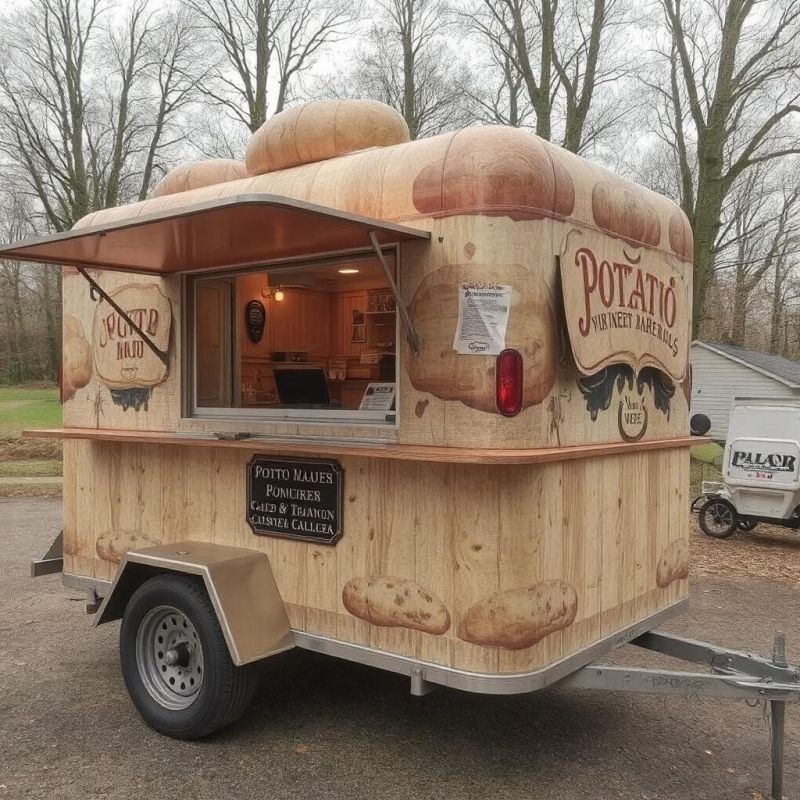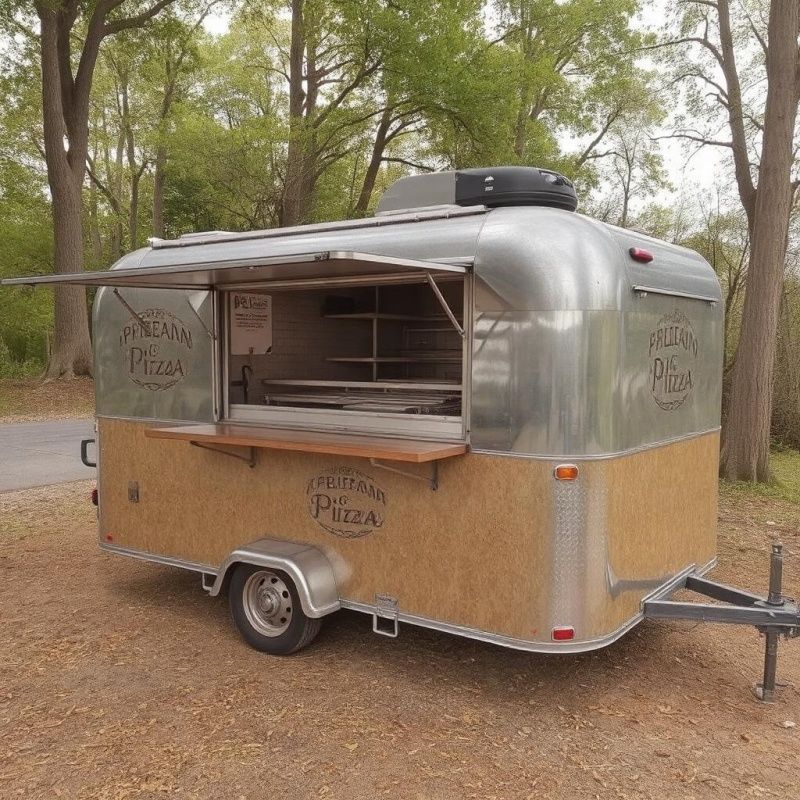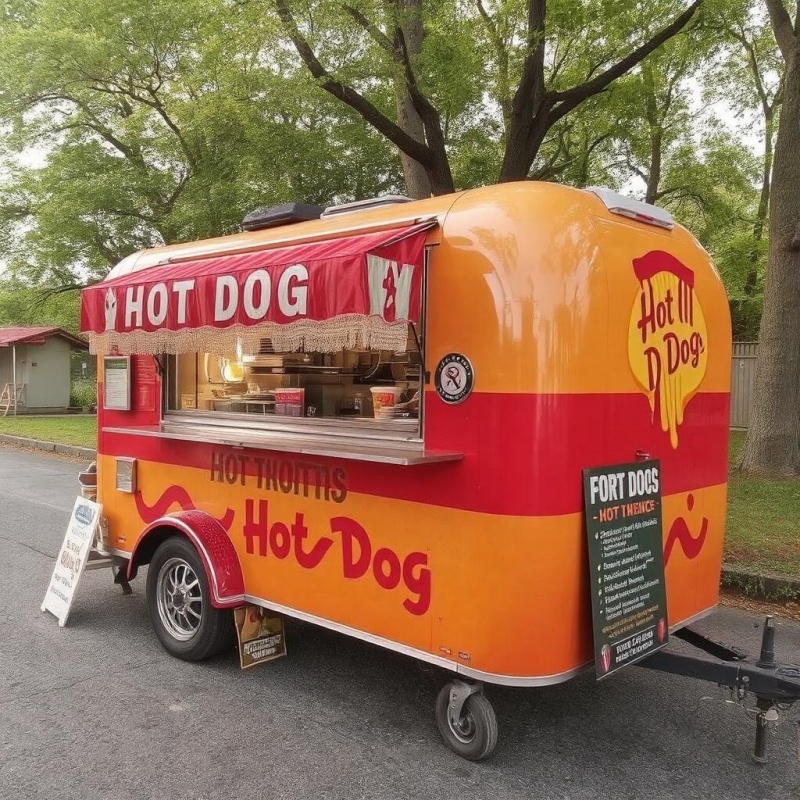Mini Food Trailer is the new favorite of street food culture. It is small and compact, about 3 meters long, 2 meters wide, weighing about 800-1200 kilograms, and made of durable and easy-to-clean materials. Its body color and design can be customized, which not only adds vitality to the city, but also provides convenient food options, becoming a unique street landscape.
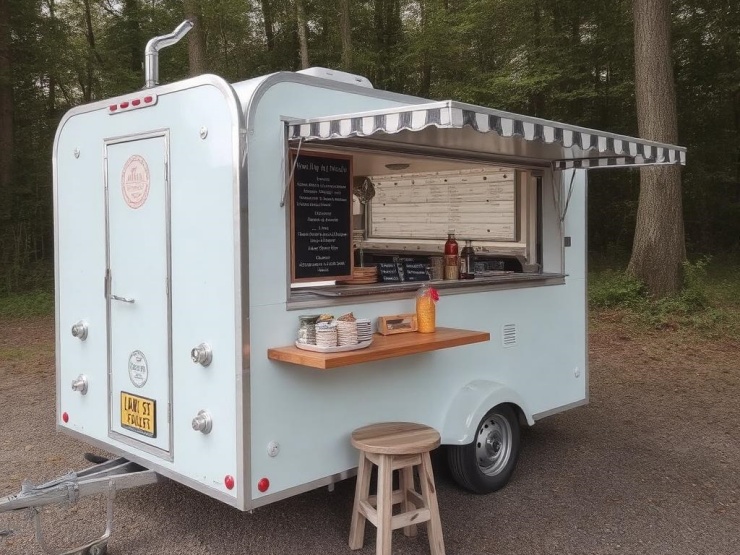
Internal equipment
Mini Food Trailer is small, but it has everything. They are usually equipped with a full set of kitchen equipment, including cooking equipment, refrigeration and freezing equipment, washing equipment and drainage systems. For example, some trailers may be equipped with cooking equipment such as induction cookers, electric ovens, microwave ovens, as well as refrigerators and freezers to store ingredients and drinks. At the same time, double sinks and drainage systems ensure the convenience of food preparation and cleaning. In addition, the interior of the trailer is also equipped with non-slip floors and easy-to-clean walls to keep it hygienic and tidy.
Features
- Portability: One of the biggest features of Mini Food Trailer is its portability. They can be easily moved between different locations in the city to serve different consumer groups.
- Diversity: These trailers can sell all types of food, including hot dogs, ice cream, French fries, pizza, hamburgers, etc. The configuration of the internal equipment can be customized according to the type of food sold.
- Economical: Mini Food Trailer is an affordable option for start-up food businesses or individuals. They not only reduce rental costs, but also provide flexible business hours.
- Brand customization: The body color, pattern and design can be customized according to brand characteristics to enhance brand recognition and publicity effects.
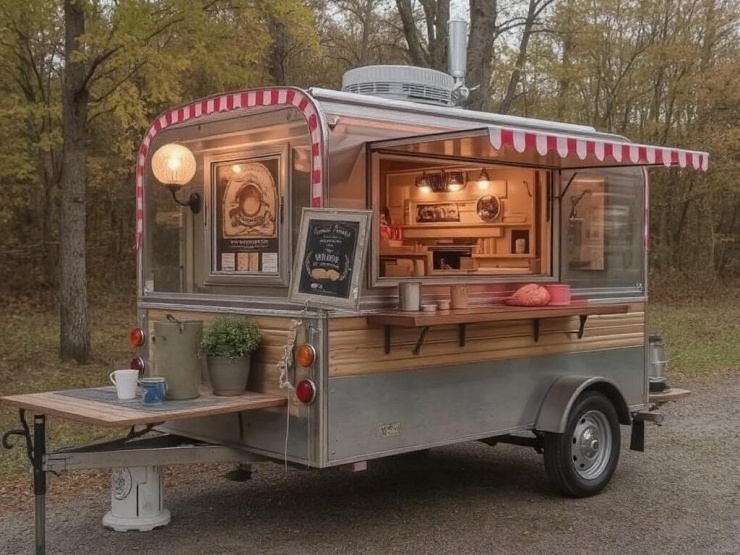
Application
Mini Food Trailer has a wide range of application scenarios. They can appear in places such as streets and alleys, park squares, sports events, music festivals, etc., providing food services to consumers in different occasions. For example, in a busy city center, an ice cream or hamburger trailer may attract a large number of office workers and tourists; while at a music festival, a hot dog or French fry trailer may become the audience’s preferred snack.

